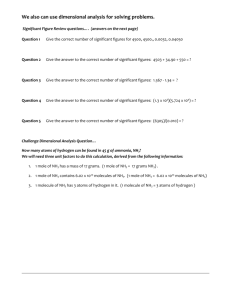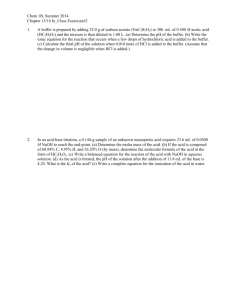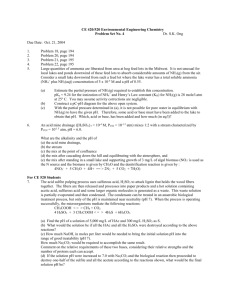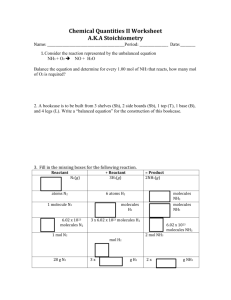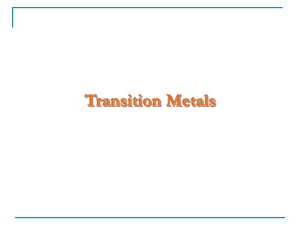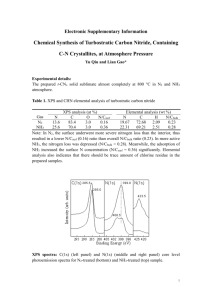control in urea cycle disorder (UCD)
advertisement
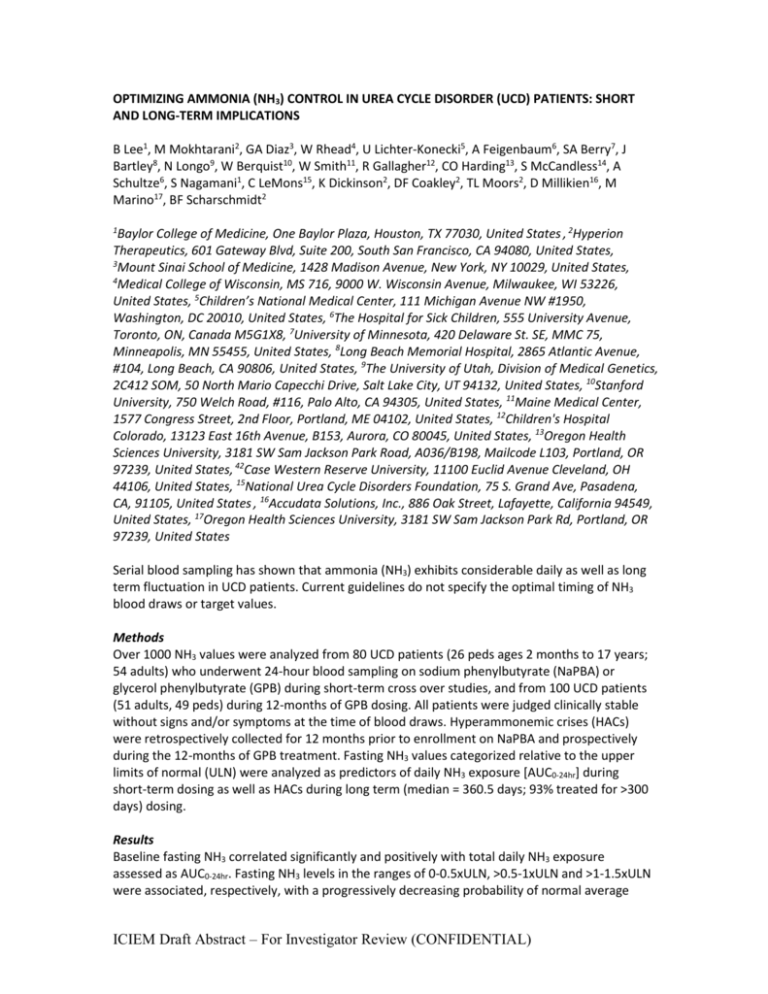
OPTIMIZING AMMONIA (NH3) CONTROL IN UREA CYCLE DISORDER (UCD) PATIENTS: SHORT AND LONG-TERM IMPLICATIONS B Lee1, M Mokhtarani2, GA Diaz3, W Rhead4, U Lichter-Konecki5, A Feigenbaum6, SA Berry7, J Bartley8, N Longo9, W Berquist10, W Smith11, R Gallagher12, CO Harding13, S McCandless14, A Schultze6, S Nagamani1, C LeMons15, K Dickinson2, DF Coakley2, TL Moors2, D Millikien16, M Marino17, BF Scharschmidt2 1 Baylor College of Medicine, One Baylor Plaza, Houston, TX 77030, United States , 2Hyperion Therapeutics, 601 Gateway Blvd, Suite 200, South San Francisco, CA 94080, United States, 3 Mount Sinai School of Medicine, 1428 Madison Avenue, New York, NY 10029, United States, 4 Medical College of Wisconsin, MS 716, 9000 W. Wisconsin Avenue, Milwaukee, WI 53226, United States, 5Children’s National Medical Center, 111 Michigan Avenue NW #1950, Washington, DC 20010, United States, 6The Hospital for Sick Children, 555 University Avenue, Toronto, ON, Canada M5G1X8, 7University of Minnesota, 420 Delaware St. SE, MMC 75, Minneapolis, MN 55455, United States, 8Long Beach Memorial Hospital, 2865 Atlantic Avenue, #104, Long Beach, CA 90806, United States, 9The University of Utah, Division of Medical Genetics, 2C412 SOM, 50 North Mario Capecchi Drive, Salt Lake City, UT 94132, United States, 10Stanford University, 750 Welch Road, #116, Palo Alto, CA 94305, United States, 11Maine Medical Center, 1577 Congress Street, 2nd Floor, Portland, ME 04102, United States, 12Children's Hospital Colorado, 13123 East 16th Avenue, B153, Aurora, CO 80045, United States, 13Oregon Health Sciences University, 3181 SW Sam Jackson Park Road, A036/B198, Mailcode L103, Portland, OR 97239, United States, 42Case Western Reserve University, 11100 Euclid Avenue Cleveland, OH 44106, United States, 15National Urea Cycle Disorders Foundation, 75 S. Grand Ave, Pasadena, CA, 91105, United States , 16Accudata Solutions, Inc., 886 Oak Street, Lafayette, California 94549, United States, 17Oregon Health Sciences University, 3181 SW Sam Jackson Park Rd, Portland, OR 97239, United States Serial blood sampling has shown that ammonia (NH3) exhibits considerable daily as well as long term fluctuation in UCD patients. Current guidelines do not specify the optimal timing of NH3 blood draws or target values. Methods Over 1000 NH3 values were analyzed from 80 UCD patients (26 peds ages 2 months to 17 years; 54 adults) who underwent 24-hour blood sampling on sodium phenylbutyrate (NaPBA) or glycerol phenylbutyrate (GPB) during short-term cross over studies, and from 100 UCD patients (51 adults, 49 peds) during 12-months of GPB dosing. All patients were judged clinically stable without signs and/or symptoms at the time of blood draws. Hyperammonemic crises (HACs) were retrospectively collected for 12 months prior to enrollment on NaPBA and prospectively during the 12-months of GPB treatment. Fasting NH3 values categorized relative to the upper limits of normal (ULN) were analyzed as predictors of daily NH3 exposure [AUC0-24hr] during short-term dosing as well as HACs during long term (median = 360.5 days; 93% treated for >300 days) dosing. Results Baseline fasting NH3 correlated significantly and positively with total daily NH3 exposure assessed as AUC0-24hr. Fasting NH3 levels in the ranges of 0-0.5xULN, >0.5-1xULN and >1-1.5xULN were associated, respectively, with a progressively decreasing probability of normal average ICIEM Draft Abstract – For Investigator Review (CONFIDENTIAL) daily NH3 (87%, 60%, 39%; p<0.001). Higher baseline fasting NH3 correlated significantly with decreased time to first HA crisis (p<0.01). The yearly incidence of HAC was lowest in patients whose baseline NH3 was ≤0.5 ULN (0.060) and highest in those whose NH3 was >1 ULN (0.652;p=0.003). After controlling for age, gender and race, patients with a baseline fasting NH3 >1.0 ULN experienced a ~15 x higher rate of HACs than those with a fasting NH3 <0.5ULN (p=0.0004). Conclusions The findings suggest that UCD patients benefit from maintaining their fasting NH3 levels < 0.5 ULN in terms of both daily NH3 exposure and HACs. . ICIEM Draft Abstract – For Investigator Review (CONFIDENTIAL)


